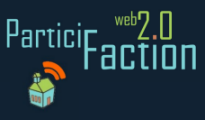How do students learn these days?
Yes, government-developed curricular content is delivered through formal educational systems, but students are also -- and, arguably, more significantly for their futures -- engaged in social, Web 2.0, or "read/write web" learning. Want to learn something today? See if there's a how-to video on YouTube, join a blog on the topic to tap into an existing community of knowledge, or create a Facebook group and wait for the information you need to cluster around you. This type of learning is significant at present, but it can only become more significant in the future. Are we adequately preparing our students of the present for this future?
Here they contrast the "Arboreal," or tree-like structure, of some systems to the "Rhizomatic," or web-like structure, of others. Sound familiar? Maybe we need to implement a new (ie: level, networked, nodal) structure for education systems themselves before we can expect to see a lot of support for learning in a Web 2.0 way.
If, as Glynis Cousin argues in Learning from Cyberspace, "the medium is the pedagogy" (117), then maybe we need to pay serious attention to how we teach instead of (or at least as well as) what we teach...




No comments:
Post a Comment